Using the wrong solutions and tools to clean the car can result in the car paint color fading if they are used over extended periods of time. Not every type of cloth is suitable for cleaning a car's paint work even if it is heavily soiled. Do not, under any circumstances, use a scouring style pad or cloth to clean the car as this can result in you removing layers of paint. In addition, always make sure that you use a cleaning solution that is specifically manufactured for the purpose of cleaning cars. Maintain the wax job to the car's paint job to reduce the need for cleaning.
A decent wax will prevent debris adhering to the car so that you do not have to undertake any unnecessary cleaning. One of the ways to protect the paintwork of the car from the sun's ultraviolet rays is to follow up the washing and drying of the bodywork with a polish and wax finish. Remember to use a good quality wax which can be bought from a number of automotive outlets and ensure you don't skimp on the waxing. Waxing will add an extra protective layer to the paint and help prevent UV rays from penetrating and discolouring the surface. When waxing and polishing, remember to check for any dints and dents as you work across the surface. Even when the sun doesn't appear to be that bright, the ultra violet rays can still remain powerful and can cause the car paint color to fade.
The sun's rays degrade the finish of the paintwork which is designed to protect it. This then leaves the paint exposed and susceptible to damage and fading to the color. With the sun comes the heat, which is absorbed and stored in the metal of the car's bodywork and can also be the cause of fading and discoloration. If you find the problem with faded car paint color is mainly a problem on the roof, hood and boot then this is likely to be the cause. Wherever possible, avoid parking the car in direct sunlight and store the car within an enclosed garage or covered port if you have the facility.
Car detailingis about much more than making your vehicle look fantastic. Expert professional washing andclay bar treatmentare part of the high-quality car detailing processes we offer at Bemac. These will remove contaminants, like dead bugs or salt residue, which would otherwise contribute to fading car paint. The next step in the detailing — professional waxing — will fill in minuscule imperfections, restore moisture, and add a layer of car paint protection.
It takes a little extra time, but applying wax to the car will help protect the paint job. Use a car wax that is specifically formulated to prevent UV damage. This type of product should be applied at least once every season and more often if you live in a climate that gets lots of sunshine. Auto experts recommend using paste or liquid wax as it provides better coverage and lasts longer than spray wax products.
Washing your vehicle regularly is always good basic car care. You should avoid doing this in direct sunlight and be sure to use special car wash products. Avoid using dishwashing soap or household cleaning detergents because these products can strip the paint of oil and its protective wax coating. Once it's clean, dry the surface of your car thoroughly. Heat and sunlight cause fading and, in some cases, the paint to bubble and crack which not only ruins the look of the car, but can cause rust damage in the long run. The paintwork acts as a protective skin over the metal frame stopping water and oil residue getting into the metal structure where rust can form.
Washing the car on a regular basis will not only remove dirt and debris that can scratch the surface of a car but also other more harmful elements as well. Bird droppings consist, amongst other things, of uric acid in minute quantities. If these droppings are not removed from the car then the acid can start to damage the paintwork. Plus, the sun on the faeces causes the chemical reaction to work even quicker, so get them washed off as soon as you have spotted them. If the damage has already occurred, contact your local car paint match repair shop and get it sorted out before any more problems occur.
If you don't have access to a garage or covered spot, then using a good car cover can help a lot. Additionally, routinely polishing and waxing your car can help to prevent the paint from fading and oxidizing over time. Now that the paint damage has been buffed out, it's time to apply the paint protection product. Car wax only provides a few months of protection, so if you choose this route, you'll need to make sure to keep your vehicle clean and repeat the waxing often.
Paint sealant is applied in a similar process to wax but lasts upwards of six months. Ceramic coating application requires a bit more knowledge but provides up to two years of protection. Applying this coating adds a microscopic layer of ceramic coating, which is very heat resistant, and harder than the other two options. Adding this coating will help enhance the appearance of your vehicle. Prolonged exposure to UV rays will damage your auto body paint by speeding up the process of oxidation. One way to prevent paint fading is by keeping the car out of direct sunlight as much as possible.
Try to park in a covered garage, in the shade, or a car park. If you can't find an enclosed or covered space to park your car, use a car cover to protect the auto body paint. If you want an extra level of car paint protection, a good wax job can go a long way. Waxing plays a major role in keeping your auto body paint and finish in excellent condition. If a car is not properly protected from the sun and other elements that get in contact with its surface, the paint will eventually start chalking. Chalking is a white discoloration on the car's paint which occurs when the pigments start fading due to the lack of protective coating.
This can be prevented by regularly washing, waxing and polishing your car. You can prevent sun damage to car paint by keeping your vehicle inside a garage, under covered parking or in a shaded area when it's not on the road. By not leaving it to bake in the sun, you'll also protect the headlights and rubberized trim from damage. Before understanding the fading process, it's important to understand how car paint is applied.
It's a four-step process that starts with a bare surface prepped with a sanding tool. This not only removes contaminants but also creates a microscopic cross pattern that helps paint stick evenly. The second step is applying primer to this surface as a base coat. The final step is a clear coat that strengthens the protection and adds shine. The clear coat is usually the layer that begins showing signs of damage.
Does Car Paint Fade Over Time But sometimes both of these aren't as accessible for all vehicle-owners! First, make sure to park your vehicle in a garage or covered location as often as possible. Second, wash and wax your vehicle regularly and properly. Using wax after washing is an essential step to help protect the coating of the paint.
Faded car paint is the last thing that's on a new-vehicle owner's mind. Unfortunately, due to environmental and other factors, your vehicle paint can start fading within as early as two years. This is more common in locations with harsher elements, but nonetheless, something every vehicle owner should be prepared for. In this article, you'll learn why auto paint fades, how to prevent auto paint fade, and how to fix faded paint. The sun's ultraviolet rays can contribute to car paint oxidation, a process that occurs when heat and oxygen come together to damage a vehicle's exterior.
Over time, heat from the sun's UV rays causes a car's paint coat to dissipate. This enables the metal beneath the car's paint to absorb heat, which results in fading. Third, and most effectively perhaps, is the benefits of waxing your car. If you don't have an orbital waxer, good old fashioned elbow grease will do, but prepare to feel the burn in your arms the next morning. Wax provides excellent additional protection by filling in tiny imperfections and smoothing paint, but like everything – exercise caution. Over-waxing can cause build-up on your car's surface, which is equally as unappealing.
If you notice the early signs of paint oxidation, it's best to act fast. Like with rust, the longer the corrosion is allowed to continue, the worse the paint damage becomes. Dull, faded car paint can be treated with an intensive buffing process with a liquid abrasive, followed by the application of protective wax. For minimal UV damage, this can often be enough to restore the vehicle's shine.
There is no scientific evidence to suggest that any particular car paint colors will fade quicker than others. White vehicle paint fades at the same rate as black and red colors, but white has no 'pigment' and therefore it is not as noticeable. Before you start washing the car, make sure it's parked in a spot that's out of direct sunlight. Then, using a soft cotton mitt and a gentle automotive cleanser, give the car a bath. If there are areas where stubborn road tar or bug splatter won't come off easily, use an auto detailing clay bar to remove the deposits safely so you don't scratch the finish.
When the exterior is clean, rinse it thoroughly to remove any cleaning product residue. If you live near the ocean, you may find that salt in the air can be problematic and can cause your car paint color to fade. If salt is allowed to remain on the surface of the paintwork, you will find that the result will be oxidization.
This can not only cause the paint to fade, but will also damage it to the point where it peels and rusts the surface beneath. This problem can be prevented with the use of a regular and effective method of cleaning and waxing to create a surface that salt cannot stick to. If you were to walk around the parking lot of a popular grocery store, you will most likely see that many cars, SUVs, and trucks have car paint that is fading.
When it comes to your car's paint, prevention is key, and your vehicle needs a deep clean to protect the top coat from any existing and future damage. Regular washing helps prevent grime, bird droppings, and dirt from sticking to the paint job and damaging it. This same schedule helps you protect your car from the sun and other environmental factors.
Investing in some paint protection can protect your car much more than you realize. Some drivers invest in auto paint protection film kits for their entire car, which is good, as it's taking the protection a level higher than waxing. When you use the right product for your vehicle, you can restore your Toyota factory finish faster, not to mention easier than any other way you want to try. All vehicles from Toyota have paint codes that match a certain color, which is what makes them so easy to find and match. You might not need to use touch up paint on the entire car. Maybe it's your hood or scratches here and there that need more attention.
All too often, we're told by customers or friends that their faded paint job meant having to repaint the whole thing. This is likely the response from a paint garage, or technician. Restoring this layer of moisture in the paint by adding a wax, essentially replacing a layer of protective lacquer, should protect and restore the colour.
After you wash and dry your car, run the palm and fingertips of your clean hand across the top surfaces. The roughness you feel is the presence of harmful environmental bonded contaminants such as brake dust, tree sap mist, tar and, more that have bonded to your paint finish. To remove these bonded contaminants and bring back that "smooth-as-glass" finish, this will require an extra step, prior to polishing and waxing, commonly referred to as "claying".
It is not just the paintwork that will be protected but the interior as well when you keep the vehicle away from the harmful rays of the sun. Avoiding direct sunlight will keep the bodywork of the car from cracking and fading. If this does happen, then secure the services of a car paint match specialist who can source the factory colour paint and carry out a respray so the vehicle looks as good as new.
If you cannot find a shady place to park, then consider buying a good quality cover to put over the car while it is parked out in the heat. Otherwise when you have finished using the car for the day, park it in the garage or under a roofed drive to keep it looking as new as the day you bought it. Sure, knowing how to avoid sun damage is great for a new car owner, but what about a used car that has already seen the effects of the blistering sun? Unless you like that look, you're probably going to want to know how to remove sun spots from car paint.
If you catch the burn during the early stages, you're best to start with a clay bar— it's affordable, easy, and can scrub off that outermost layer of haze. Most automotive part suppliers sell a clay bar product that can be used on most vehicle surfaces, including glass and mirrors. From being a significant source of oxidation to fading or causing the paint to peel, sunlight continues to cause various kinds of damages to our cars. UV exposure poses a persistent danger to car owners across the globe.
While time and again, research has proven that these rays affect human skin negatively, little, did you know that it can also affect your car paint adversely? Car UV protection is critical to prevent your vehicle from the paint to damage. To prevent car paint fading, you should park your vehicle in a garage or shaded area whenever possible. You should also get your car professionally washed and waxed every few weeks or any time your vehicle's exterior looks dirty. Salt is corrosive, especially when it remains on a car's body for an extended period of time.
In this instance, salt can be exposed to the sun's UV rays, which heat up salt crystals on a car. This can cause the salt crystals to eat away at a car's paint, to the point where the vehicle's color fades and rust starts to form. Single stage paint jobs are, therefore, at risk of paint fade and oxidization before that of clear coated paint jobs.
They can develop an unsightly faded pink look to them over time due to the sun stripping the paint of its moisture and oils. If your car is faded, learn hot to restore faded car paint and get it shiny and looking like new. Apply liquid rubbing compound to the buffing pad on the buffer. Wipe off all excess rubbing compound with a soft, clean rag. Hand washing is the safest and most thorough method of cleaning the exterior of your vehicle, when performed properly.
During rains, it is recommended to wash your car to remove contaminants that may have settled or about every 10 days if no rainfall. The vehicle should be hosed down while the bodywork is cool or in the shade. A jet wash can be used, however be cautious not to work too closely to the panel and always spray at a 45 degree angle, this will blow the dirt and grime away from the paintwork. It is important that the lower part of the car is rinsed thoroughly as this is where much of the road dirt and salts accumulate. When you store your car outside and uncovered frequently, you might notice some areas of the paint start to look a little sun faded. Don't worry about paying for a whole new paint job—we have good news for you!

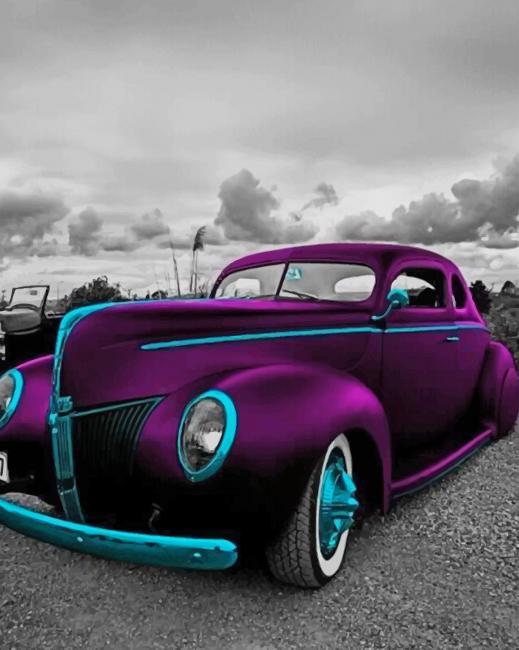









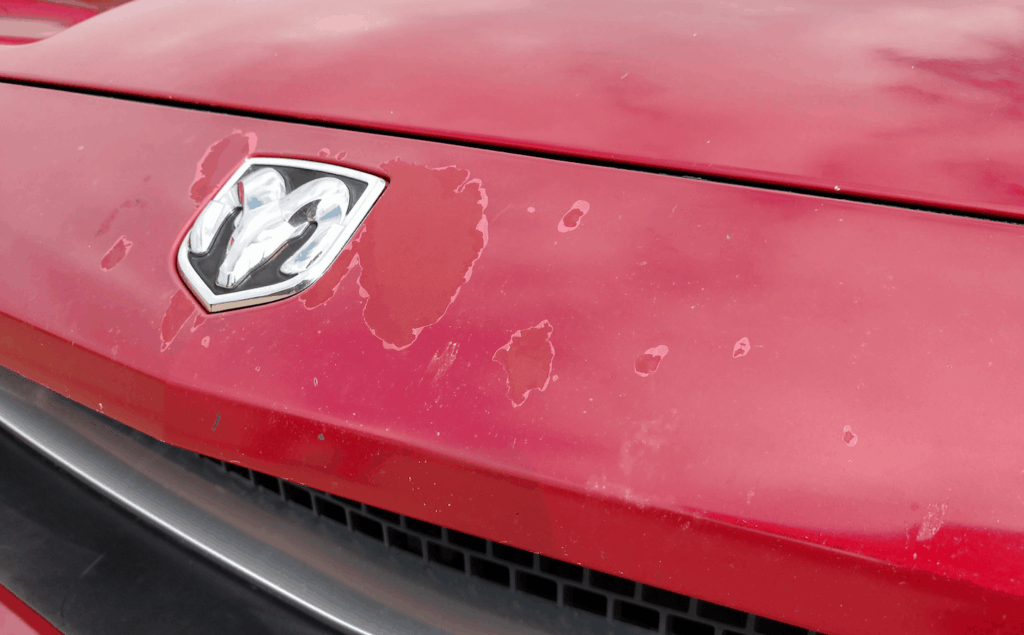
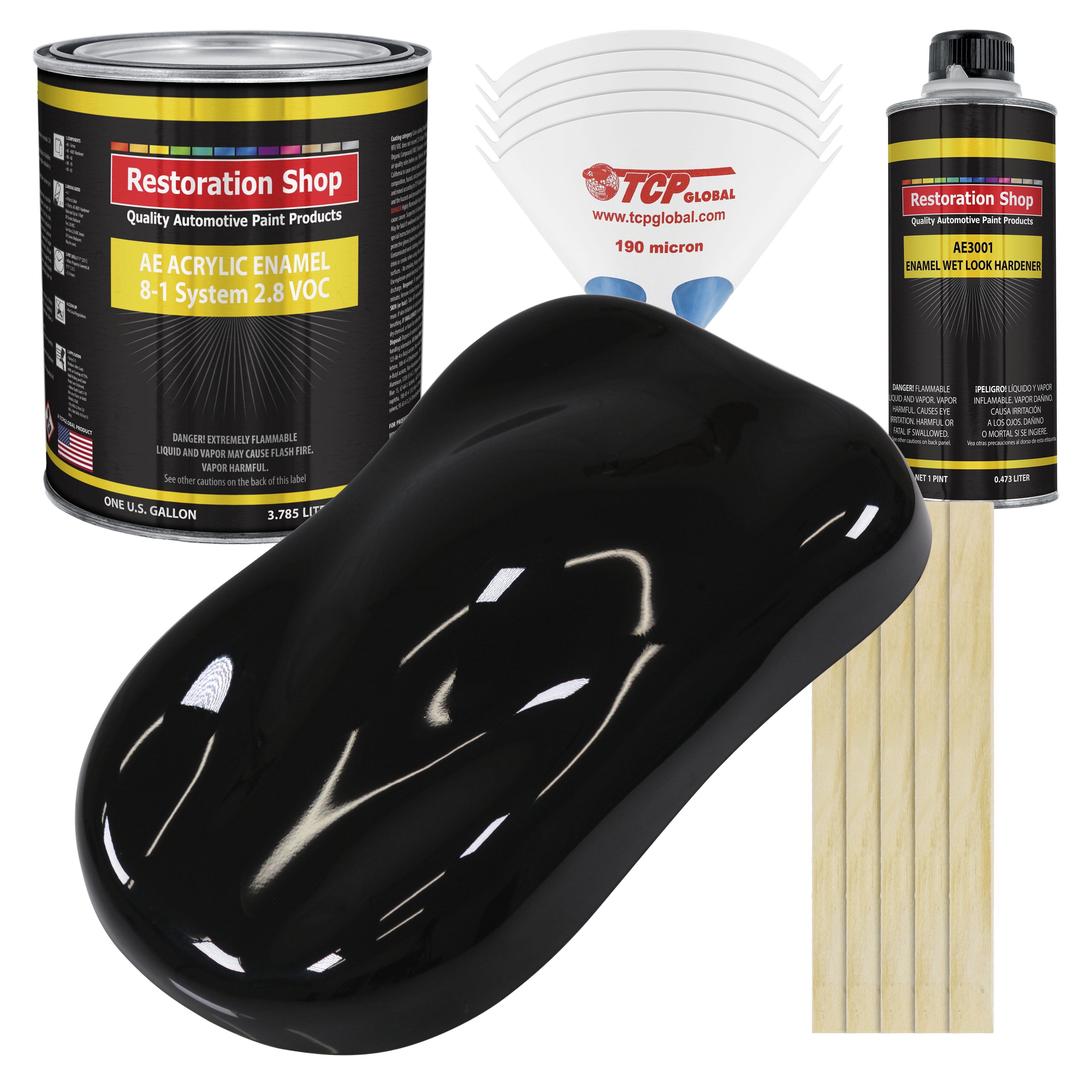
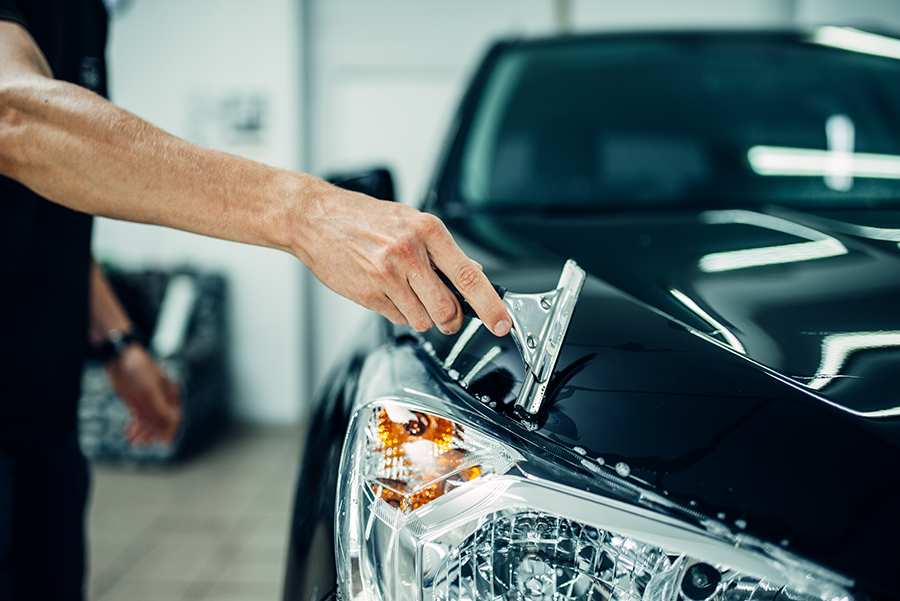





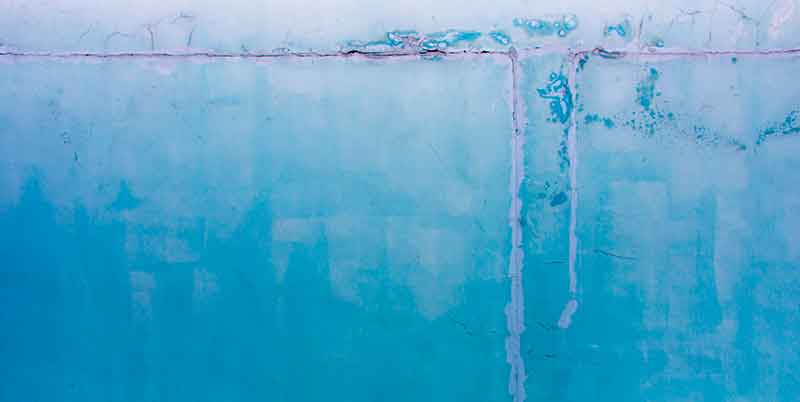


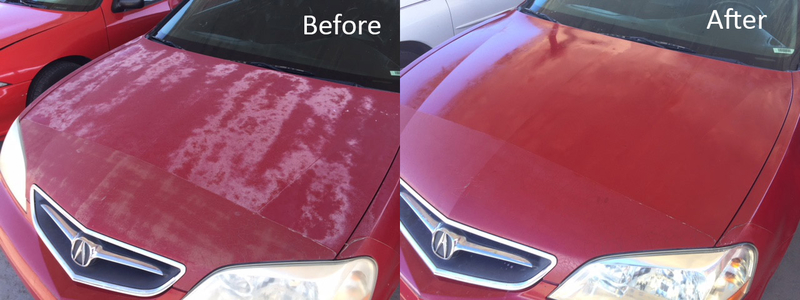



No comments:
Post a Comment
Note: Only a member of this blog may post a comment.